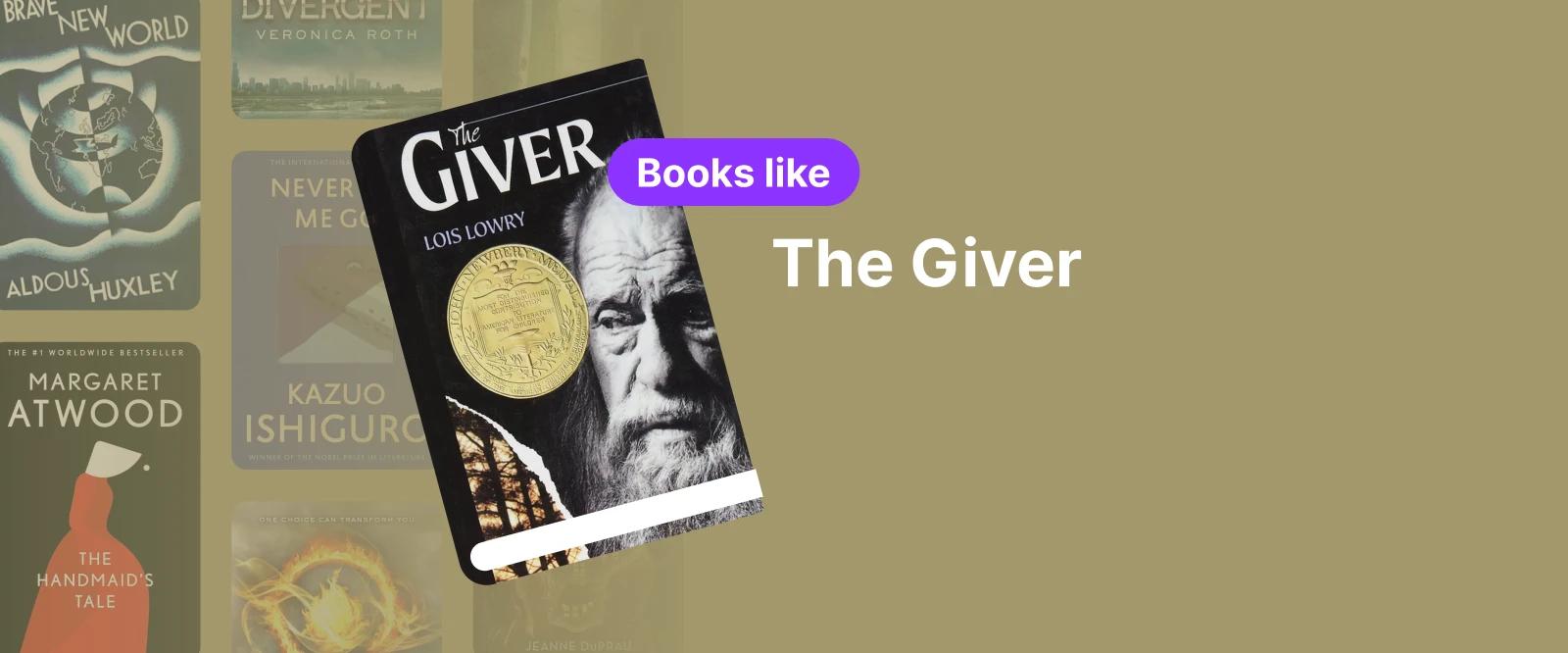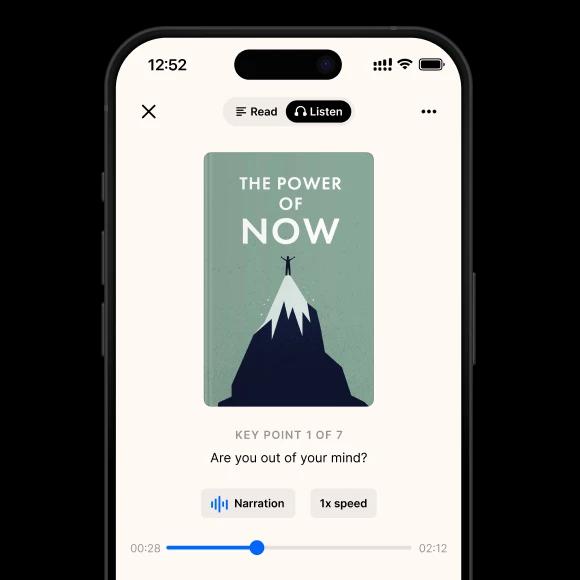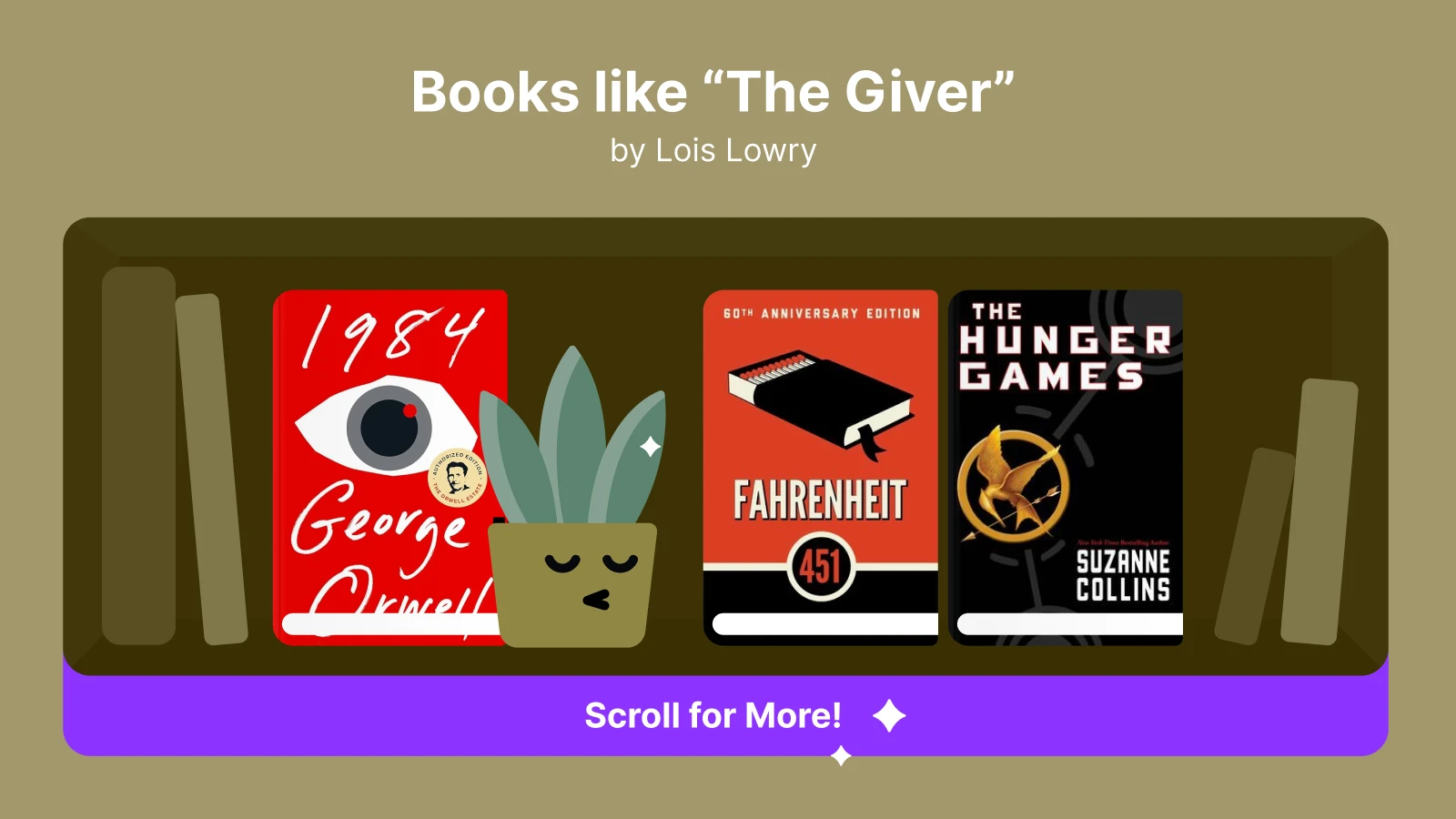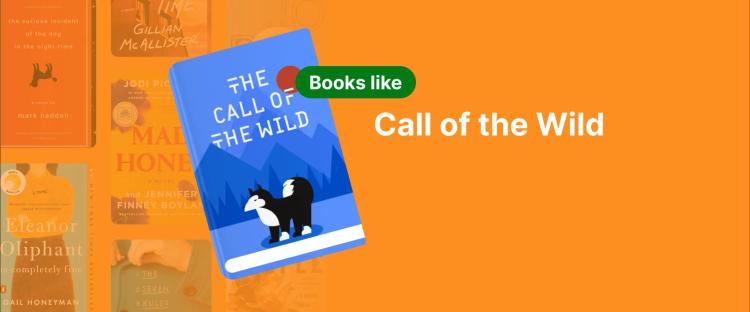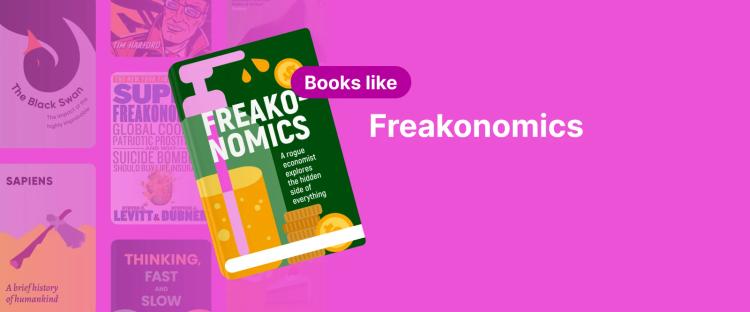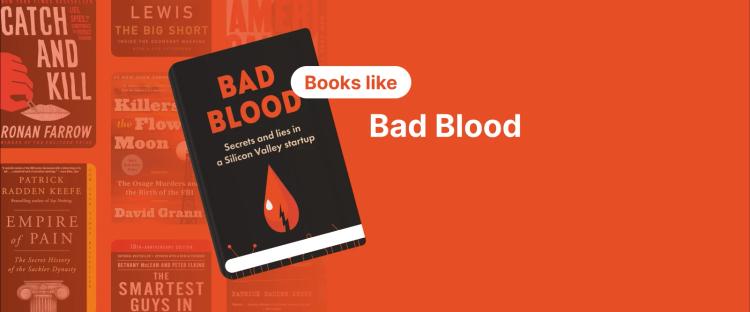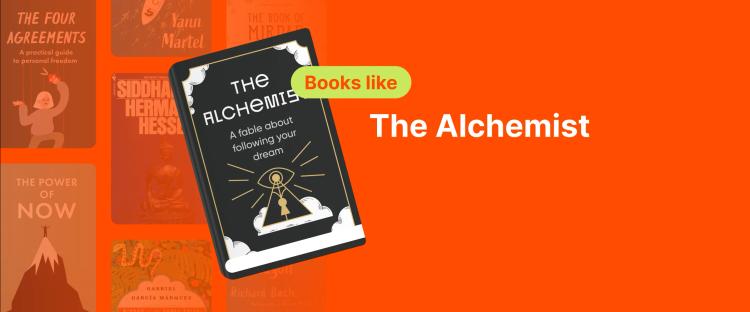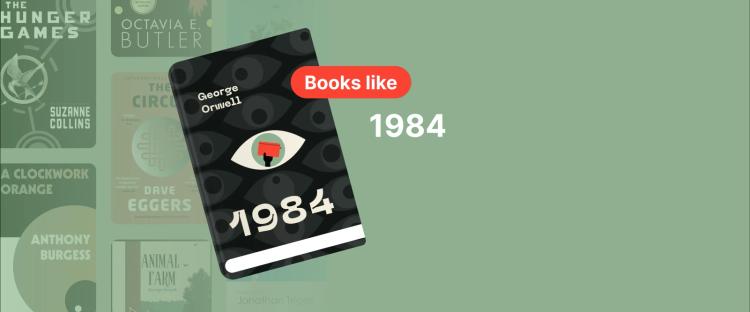If you finished 'The Giver' and you're hungry for more dystopian worlds where nothing is quite as it seems, you're in the right place.
This list brings you 12 books like 'The Giver' that explore similar themes of control, memory, and the cost of a so-called perfect society. Each one asks tough questions about what we're willing to give up for safety — and what happens when someone refuses to accept the rules.
Want insights from powerful books without spending hours reading? Download Headway and access 15-minute summaries of the world's best books. Learn faster, think deeper — all from your phone.
Quick answer: What are the best books like 'The Giver' to read now?
'1984' by George Orwell: A man fights back against a government that controls everything.
'The Hunger Games' by Suzanne Collins: Teens fight to the death in a game (hello, 'Squid Games' fans) that keeps society in line.
'Brave New World' by Aldous Huxley: People are genetically engineered and conditioned to accept their place in a rigid class system.
'Divergent' by Veronica Roth: A girl discovers she doesn't fit into any of society's strict factions — and that makes her dangerous.
'Fahrenheit 451' by Ray Bradbury: Firemen burn books because reading is forbidden until one moment that turns life upside down.
12 best books like 'The Giver' about control, memory, and rebellion
These 12 books like 'The Giver' dig into the same questions. What happens when government control strips away everything that makes us human? How does dystopian fiction show us the price of safety over freedom? Each story explores human nature under pressure and what it takes to fight back when the system tells you not to.
1. '1984' by George Orwell
This New York Times bestseller is one of the most famous dystopian novels ever written. Winston Smith lives in Oceania, a totalitarian state ruled by the Party and its leader, Big Brother. Winston works at the Ministry of Truth, and his job is literally rewriting history. Every day, he changes old newspaper articles to match whatever the Party says is true at the moment.
But Winston secretly hates the Party. He starts keeping a diary, which is a crime. He falls in love with Julia, which is also forbidden. Together, they try to resist. The surveillance is everywhere — telescreens watch citizens at all times, and the Thought Police arrest anyone who even thinks against the Party.
Similarities between the books:
A protagonist who sees the truth when others cannot
Government control over memory and history
The severe consequences when independence disappears
Endings that reveal the true cost of challenging authority
2. 'Fahrenheit 451' by Ray Bradbury
Ray Bradbury wrote this dystopian novel about a future where books are illegal. The main character, Guy Montag, works as a fireman — but firemen in this world don't put out fires. They start them. Montag's job is to burn books and the houses where people hide them.
One night, Montag meets Clarisse, a teenage girl who asks him questions he's never considered. She makes him think about whether he's actually happy. Soon after, Montag watches an old woman choose to burn alive with her books rather than leave them. Seeing the woman sacrifice herself shakes him deeply. He starts stealing books and reading them in secret.
Similarities between the books:
Dystopian societies where the government controls knowledge
Protagonists who work for the system before questioning it
A catalyst person who opens the main character's eyes
The dangerous consequences of choosing comfort over truth
3. 'The Hunger Games' by Suzanne Collins
The games begin — welcome to Panem. The Capitol divides the nation into twelve districts and rules them with absolute power. Every year, each district must send two teenagers to compete in the Hunger Games, where only one tribute survives. And Katniss Everdeen volunteers to take her younger sister's place in the Games.
Katniss is an archer and a survivor. The Capitol uses the Games to remind the districts of its absolute power. But Katniss's defiance during the Games sparks something bigger — she becomes a symbol of rebellion without meaning to.
Similarities between the books:
Dystopian societies where fear and spectacle maintain government control
Young protagonists who must navigate systems designed to strip away their humanity
Characters who risk everything to protect those they love
The power of one person to challenge an entire system
4. 'Brave New World' by Aldous Huxley
This story shows a future where humans are created in laboratories. Society divides into castes, with Alphas at the top and Epsilons at the bottom. Citizens take a drug called soma whenever they feel upset. The soma guarantees they never experience pain or deep emotion.
The story follows several characters, but focuses heavily on Bernard Marx, an Alpha who feels like an outsider, and John, who was raised outside this dystopian world and struggles to understand it. This thought-provoking book asks whether happiness without freedom is worth having.
Similarities between the books:
Societies that eliminate pain in pursuit of stability
Citizens who must accept their roles without question
The price of choosing comfort over freedom
Questions about whether a society built on control is worth the cost
If you ever feel like your life could be a chapter in a novel, it might be time to step back and open a nonfiction book instead. Start with 'Everything Is F*cked: A Book About Hope.' It's an in-depth look at what it really means to find meaning.
5. 'The Handmaid's Tale' by Margaret Atwood
This novel plunges you into another totalitarian regime where the government strips women of every right. They can't work, own property, or even read.
The story follows Offred, a Handmaid whose sole mission is to bear children for the elite. She remembers her old life. Husband, daughter, freedom. Those memories are a quiet act of defiance.
Through Offred's eyes, Atwood explores how fear, control, and blind obedience can erode humanity itself. This story shows how the smallest acts of resistance can become a form of survival.
Similarities between the books:
Societies that maintain power through constant surveillance
Memory as a crucial act of rebellion — Offred remembers the past just as Jonas receives memories
Government rituals designed to maintain control
Protagonists who must hide their true thoughts and feelings to survive
6. 'Never Let Me Go' by Kazuo Ishiguro
Kathy, Tommy, and Ruth grew up together at Hailsham boarding school. The school seems idyllic at first. But as the story unfolds, we learn the terrible truth about who these students are and what their future holds.
The students are clones, created to provide organs for "normal" humans. Their entire purpose is to donate organs until they "complete." The novel forces you to think about what defines someone as human and whether anyone can escape a predetermined fate.
Similarities between the books:
Dark truths hidden beneath seemingly pleasant surfaces
Protagonists who gradually discover the disturbing purpose their society assigned them
Young people coming to terms with a future they cannot change
Memory and the past as proof of humanity — characters cling to memories to preserve who they are
If 'Never Let Me Go' makes you question how people can ignore cruelty hidden in plain sight, 'Willful Blindness: Why We Ignore the Obvious' takes that question into the real world. Margaret Heffernan explores why individuals and organizations so often choose not to see uncomfortable truths — and what it takes to face them.
7. 'Divergent' by Veronica Roth
Veronica Roth created a post-apocalyptic Chicago divided into five factions. Each faction values a different virtue: Candor (honesty), Abnegation (selflessness), Dauntless (bravery), Amity (peace), and Erudite (intelligence). At sixteen, everyone must choose which faction they'll belong to for life.
The main character, Beatrice "Tris" Prior, discovers she's Divergent — she doesn't fit into any single faction. Her divergence makes her dangerous to the system.
Similarities between the books:
Societies divided into strict categories that citizens must accept
Protagonists whose unique abilities make them dangerous to those in power
The consequences when someone doesn't fit the system's mold
Young adults navigating deadly situations that adults created
8. 'The Maze Runner' by James Dashner
James Dashner's novel opens with Thomas waking up in a metal box with no memory of his past. He arrives in the Glade, an area surrounded by massive stone walls. A group of teenage boys has been living there, trapped. Beyond the walls is the Maze — a deadly, shifting labyrinth that the boys must solve to escape.
Every month, a new boy arrives with no memories. The Gladers have created their own society with rules and roles. But when Thomas arrives, everything changes. The next day, a girl arrives — the first ever. She brings a message: she's the last one. Now Thomas and the Gladers must solve the Maze before it's too late.
Similarities between the books:
Young protagonists with incomplete or controlled memories
Isolated communities cut off from the larger world
Young people creating order and meaning when authority fails them
Gradual revelations that challenge everything the characters believed about their dystopian world
9. 'Unwind' by Neal Shusterman
Neal Shusterman created a disturbing future where parents can choose to have their teenagers "unwound" — a process where every part of their body is harvested and given to others. Society has decided this isn't murder because the teen technically lives on in different people. The story follows three teens running from their unwinding orders.
Connor is a troublemaker whose parents signed the order. Risa is a ward of the state, deemed not talented enough to keep. Lev is a tithe — a child raised to be unwound as a religious offering. Together, they try to survive until they turn eighteen, when they can no longer be unwound.
Similarities between the books:
Dystopian societies where disturbing rules control human life — rules that citizens accept as normal
Young people used by society for purposes they didn't choose
Questions about what makes someone human and whether people have the right to control their own bodies and futures
Protagonists who must escape systems designed to strip away their autonomy
'Unwind' leaves you wondering how a society could ever come to accept such horrors. Yet, history shows it happens more often than we'd like to admit. To understand how ordinary people become complicit in extraordinary wrongs, turn to 'On Tyranny: Twenty Lessons from the Twentieth Century.' In this powerful reflection, Timothy Snyder reveals how authoritarianism takes root not through sudden force, but through quiet obedience — and how every individual choice can help preserve freedom.
10. 'The City of Ember' by Jeanne DuPrau
Welcome to the Ember. It is an underground city built as humanity's last refuge. For over two hundred years, citizens have lived by the light of a massive generator. But now the generator is failing. The lights flicker more often. Supplies are running out. And no one remembers why they're underground or how to get out.
Twelve-year-olds Lina and Doon refuse to accept that Ember must die in darkness. When Lina finds fragments of an ancient document, she and Doon begin to search for a way out. This post-apocalyptic novel is perfect if you want a dystopia with mystery and hope woven throughout.
Similarities between the books:
Isolated communities with controlled information about the outside world
Young protagonists who discover truths that adults have forgotten or hidden
Systems designed to protect people that begin to fail
The critical importance of memory, knowledge, and questioning authority
11. 'Uglies' by Scott Westerfeld
Scott Westerfeld created a future where everyone undergoes mandatory surgery at sixteen to become "pretty." The operation doesn't just make you beautiful — it changes your brain, making you happy, compliant, and empty-headed. Tally Youngblood can't wait to turn pretty and join her friends in New Pretty Town.
But then Tally meets Shay, who plans to run away to the Smoke, a hidden community where people stay "ugly" and free. When Shay disappears, Special Circumstances forces Tally to infiltrate the Smoke and betray her friend. The deeper Tally gets, the more she questions everything her dystopian society has taught her about beauty, conformity, and freedom.
Similarities between the books:
Societies that use physical or mental alterations to create conformity and control
Protagonists who begin by accepting their society's rules before discovering the truth
Government power maintained by limiting how people think and see the world
Young people choosing between fitting in and being truly free
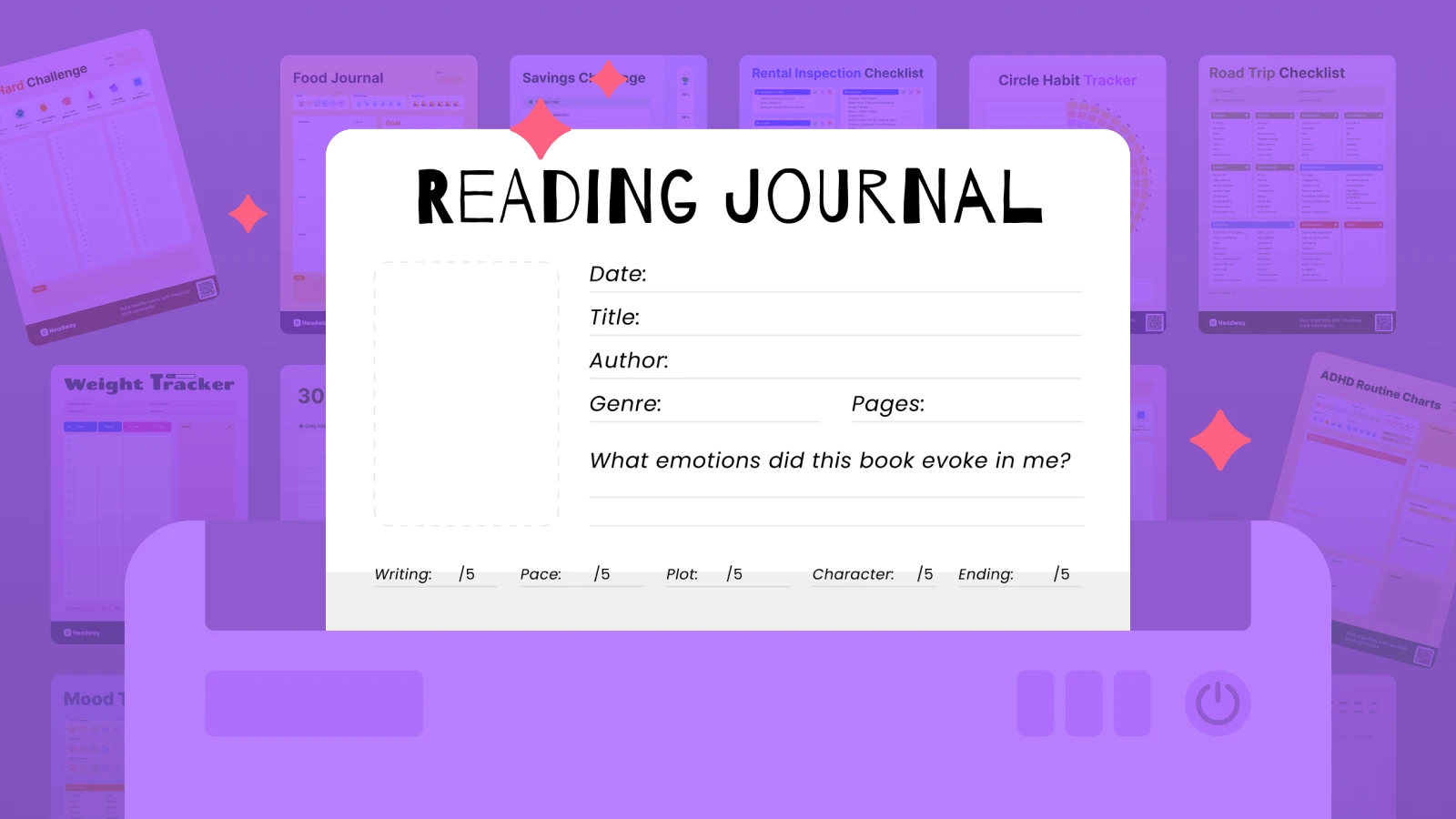
12. 'A Wrinkle in Time' by Madeleine L'Engle
Madeleine L'Engle's classic follows Meg Murry, her brother Charles Wallace, and friend Calvin as they search for Meg's missing scientist father. Three mysterious beings transport them through space and time to the planet Camazotz. This planet has achieved "perfect" harmony — but at a terrible cost.
On Camazotz, a disembodied brain called IT controls everyone's thoughts. Citizens move in perfect rhythm, children bounce balls in perfect synchronization, and no one thinks for themselves. Meg must save her brother and father from IT's control, learning that her faults and individuality are actually her greatest strengths.
Similarities between the books:
Worlds where conformity is enforced and individuality is dangerous
Control over minds and thoughts that destroys humanity
Young protagonists who must resist powerful forces trying to stop them from thinking for themselves
Celebration of the human spirit's ability to love and choose, even when facing overwhelming power
After traveling to Camazotz, it's hard not to see echoes of our own world, even if no one's controlling our thoughts. If Meg's journey teaches us to embrace what makes us different, 'The Courage to Be Disliked' shows us how to do it in real life. This Japanese philosophy classic invites readers to let go of fear, take ownership of their choices, and find the freedom that comes from living authentically.
Start your next chapter with Headway
You've just explored twelve dystopian worlds where characters like Jonas had to question everything they were taught. These stories remind us that comfort without truth isn't really living — it's just existing.
If you're drawn to these themes of knowledge, growth, and questioning authority, there's another way to keep expanding your mind. Headway transforms bestselling nonfiction books into 15-minute summaries you can read or listen to anytime.
Explore books on psychology, decision-making, and how societies shape the way we think. You'll find titles that help you understand the human behavior patterns you see in these dystopian novels — and in real life. Whether you're commuting, exercising, or taking a break, Headway lets you keep learning.
Download Headway and turn every spare moment into a chance to grow smarter.
Frequently asked questions about books like 'The Giver'
What's 'The Giver' about?
'The Giver' Jonas, a twelve-year-old boy living in a perfect community where there's no pain or suffering. At the annual Ceremony, the Elders choose Jonas to become the Receiver of Memory. As the current Receiver (who becomes the Giver) transfers memories to Jonas, the boy discovers what his community has sacrificed: color, music, love, and emotions. Jonas learns the truth about "release." It means killing people. He escapes with Gabriel to return memories to the community.
What style of book is 'The Giver'?
'The Giver' is a dystopian novel. We can also consider it a work of speculative fiction, since it imagines a society with rules and technology different from our own. The novel blends sci-fi elements with social commentary about conformity and control.
What should I read after 'The Giver'?
After 'The Giver,' continue with Lois Lowry's other books in the same universe: 'Gathering Blue,' 'Messenger,' and 'Son.' These books expand the world and answer questions about Jonas's fate. If you want similar dystopian themes by other authors, try '1984' by George Orwell for a more adult take on thought control, or 'The Hunger Games' by Suzanne Collins for another young adult perspective on rebellion against an oppressive government.
Is 'The Giver' part of a series?
Yes. 'The Giver' is the first book in the Giver Quartet. The series includes 'Gathering Blue,' 'Messenger,' and 'Son.' Each book can stand alone, but remember they're set in the same world, so be prepared to meet your favorite characters across multiple books.
What's the opposite of dystopia?
The opposite of dystopia is utopia. Utopian literature describes an imagined perfect society where everything works ideally and people live in harmony. The word comes from Greek and means "no place" or "good place." If you're looking for more utopian or dystopian reads specifically, check out the Headway library for summaries of these and other great books.

